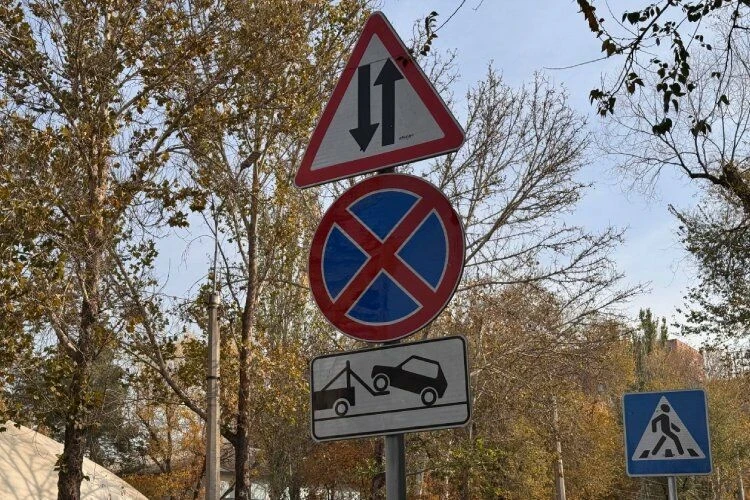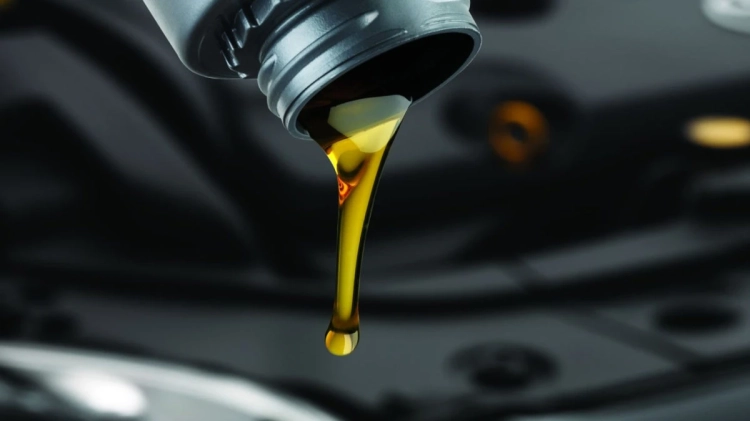
Common Myna. Their body plumage is brown-chocolate in color, while the head, neck, wings, and tail...

Large Turtle Dove. The total body length is 340–345 mm, and the wingspan is 590–600 mm. The head...

“The price for parking will be such that Bishkek drivers will understand that it is cheaper to get...

Chibis A large wader, similar to a pigeon. The upper body is brilliantly green, with purple, blue,...
As of today, more than 500,000 personal vehicles are registered in Bishkek. This was reported on...

Photo 24.kg On the section of Toktogul Street that runs from Erkindik Boulevard to Ibraimov...
On October 21, a multilateral dialogue on combating transport-related air pollution in the country...

A new car has appeared in Kyrgyzstan, designed from scratch by local craftsmen from the design...

Karavaika - a bird from the ibis family. It measures 48-66 cm in length, weighs 500-580 g, and has...

Kobchik – a small-sized falcon It resembles a kestrel in its proportions and lifestyle but differs...

Kurgannik Mohnonogiy - a rare Central Asian mountain-steppe species. It is found in mountains and...

Owl (white, eared, marsh, hawk). Order of birds of prey, including more than 420 large and...

Pogonys. A small bird, slightly smaller than a corncrake, measuring 21-25 cm in length and...

Car Market 2018 In Kyrgyzstan, 837 vehicles, including passenger and cargo cars, were imported in...

Photo 24.kg. Municipal parking lots In Bishkek, the discussion about the introduction of paid...

Derbnik. A small stocky falcon with relatively short pointed wings and a long tail. The body...

Dusky Darner - Sympycna fusca V. d. Lind. The body of this dragonfly is mainly brown-bronze in...

Seagull The most numerous genus of birds in the gull family, inhabiting both marine expanses and...

1. Home Exchange...

Winter Hawk - a bird of the Accipitridae family It resembles a buzzard in build, but is somewhat...

Pheasant. Family Phasianidae, order Galliformes. The length of a pheasant is 80-90 cm, with a tail...

A recent study conducted in the USA with financial support from Microsoft showed that three out of...

Vyahir. The largest representative among our pigeons, weighing between 420–620 g. The overall...

Traveling to the hunting location by car in Kyrgyzstan is quite comfortable, but the distances to...

Pink Starling. Its head has a long hanging crest at the back, the neck from the front to the...

Goshawk. The size is medium, about 1.5 times larger than a crow. Goshawks are the largest species...

Red-nosed Diving Duck. A rather peculiar duck, biologically considered a transitional form between...

Owners of new cars are often surprised that despite the flawless operation of the engine and...

Common Buzzard (Buteo buteo). A predatory bird the size of a buzzard. Body length is 51—57 cm,...

Keklik (Rock Partridge) Family Phasianidae. In external appearance and body structure, the keklik...

According to a survey conducted by the WEBBANKIR platform among 1,600 Russians, 74% of respondents...

Corncrake - Crex crex A small bird measuring 22-25 cm in length and weighing about 150 g. It...

Saker Falcon. A large falcon, usually with reddish-yellow tones in its plumage. It has quite large...

Heron (white, gray, reddish). A genus of large (80-100 cm and above) birds of the heron family....

Black-headed Stonechat. Stonechats (Saxicola) are a genus of birds in the thrush family. The...

Hoopoe. A small bird measuring 25-29 cm in length and with a wingspan of 44-48 cm. Distinguished...
Takhir Tashirov, a resident of the village of Iskra in the Chuy region, demands that law...

A saddle blanket made from strips of "kadjary" fabric Fabrics made using the...

Great Cormorant A large, goose-sized, aquatic bird with almost entirely black plumage, an...

Pastushok A small bird (weighing up to 170 g), it runs excellently and is closely associated with...

Snow Leopard — Felis uncia Schreb. (in Kyrgyz: Ilbirs) In Kyrgyzstan, the snow leopard is found in...

Ruddy-tailed Shrike - a representative of the shrike family Slightly larger than a sparrow (about...

Stoat — Mustela erminea Linn. (in Kyrgyz: arys, kara-kuyruk) The territory of Kyrgyzstan is...